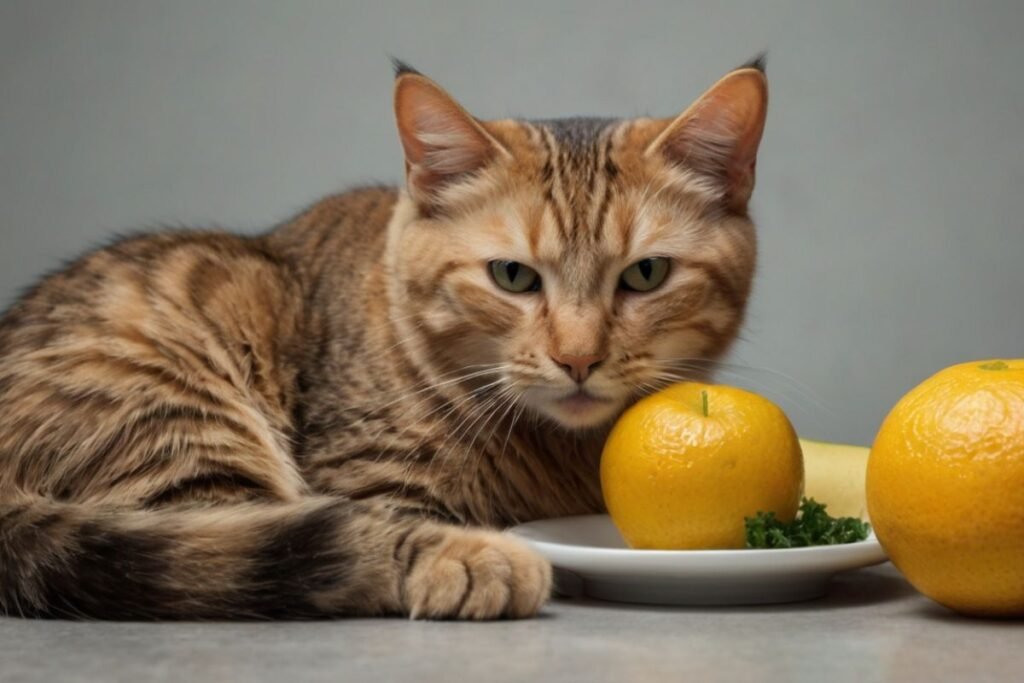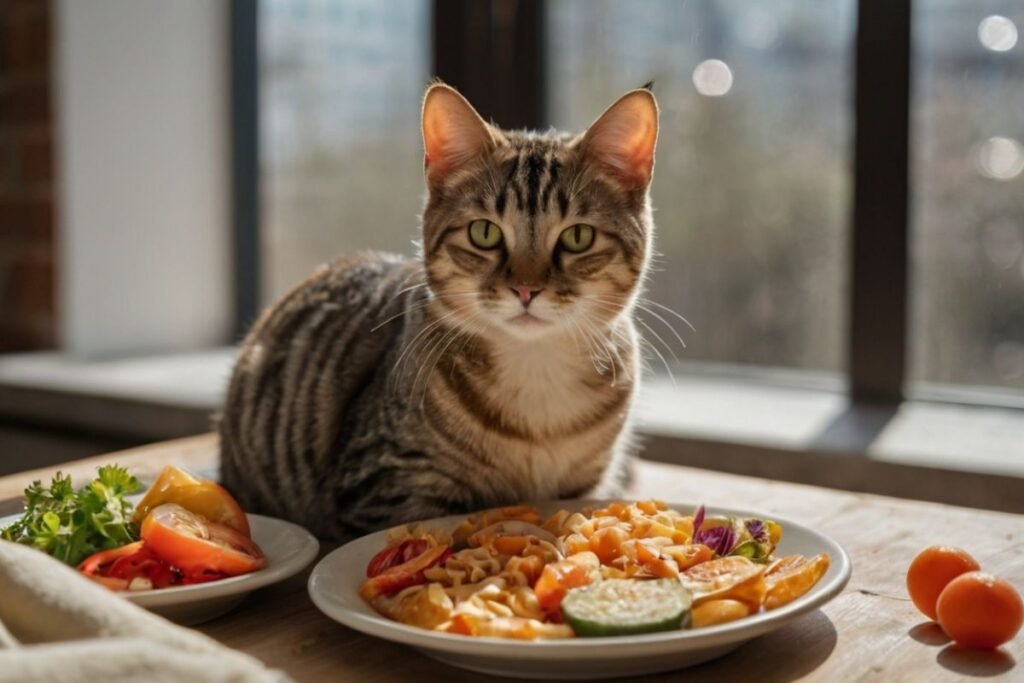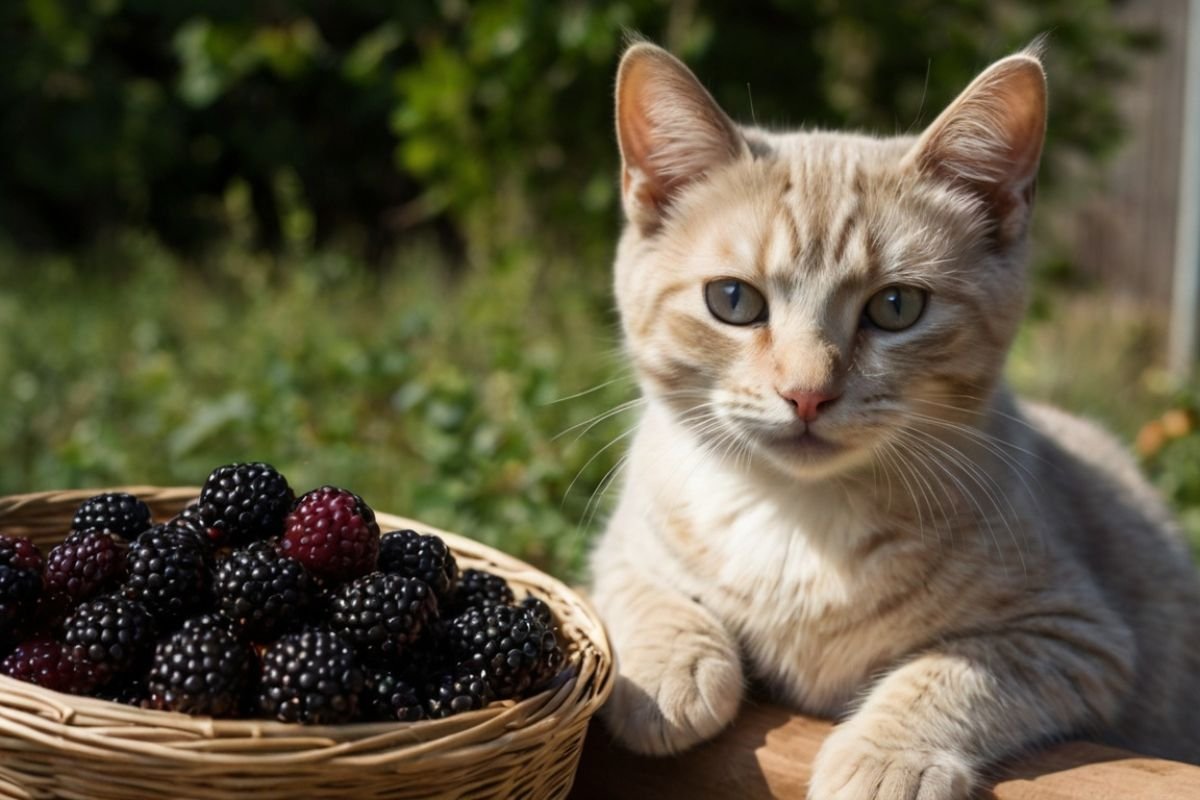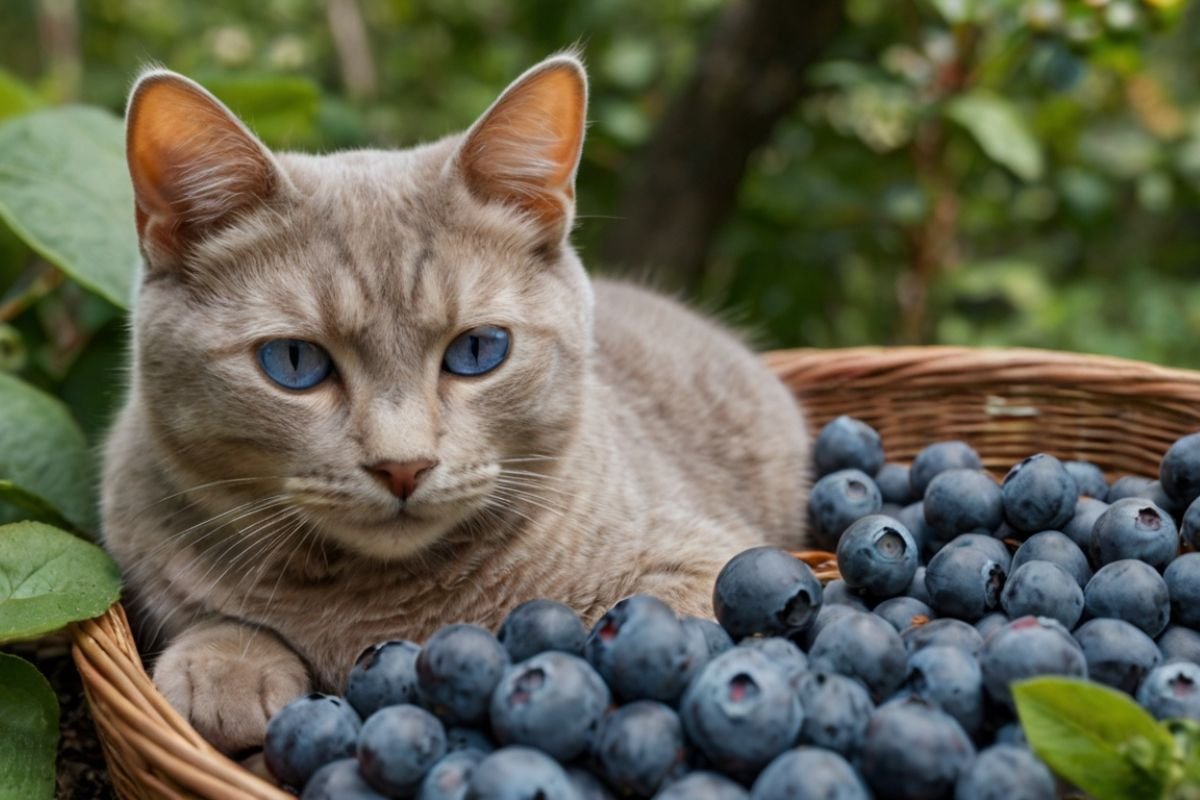Cats are curious creatures. My orange boy Rio often sits by my side during dinner, eyes wide with hope. His little pink nose twitches at each new smell. But can I share my meal with him? Should I? The truth is, what cats can and can’t eat isn’t always clear. As a cat parent, knowing what foods are safe for your furry friend is key to keeping them healthy and happy.
Cats are not small dogs. They have their own very special food needs. What works for one pet may harm another. In this guide, we’ll dive into what cats can eat safely. We’ll also talk about foods that might hurt them. By the end, you’ll know how to feed your cat well and spot signs of food trouble.
Let’s explore the world of feline food together. Your cat’s health depends on more than just filling a bowl. It’s about making smart food choices every day.

Table of Contents
Understanding Your Cat’s Dietary Needs
Cats are true meat-eaters. In the wild, their cousins hunt small animals. This natural diet shapes what house cats need to eat.
Obligate Carnivores: What This Means
Unlike dogs or people, cats must eat meat. We call them “obligate carnivores.” This means their bodies need nutrients that only come from animal tissue.
Cats need:
- High protein (at least 26% for adult cats)
- Animal fats
- Low carbs
- Certain vitamins from meat
- Taurine (an amino acid)
Without these things, cats can get very sick. For instance, taurine isn’t in plants. Cats who don’t get enough taurine can go blind or develop heart problems.
Basic Nutritional Requirements
A healthy cat diet should have:
- Water: Cats need fresh water daily. Many cats don’t drink enough, so wet food helps keep them hydrated.
- Protein: The building block of muscle, organs, and other tissues.
- Fats: Give energy and help absorb vitamins.
- Vitamins: Aid many body functions.
- Minerals: Support bones, teeth, and more.
Rio, like all cats, needs these things in the right amounts. Too much or too little can lead to health issues down the road.
Also read, Can Cats Eat Dog Food?
Commercial Cat Foods: Making Smart Choices
The pet food aisle can feel overwhelming. So many brands claim to be “the best.” How do you pick?
Wet Food vs. Dry Food
Both wet and dry foods can be good choices. Each has its pros and cons.
Wet food benefits:
- More water content (good for cats who drink little)
- Often more protein
- May be more tasty
- Easier for older cats to eat
Dry food benefits:
- More cost-effective
- Stays fresh longer
- May help clean teeth
- More convenient to store
Many cat experts suggest a mix of both. Rio gets wet food in the morning and dry food to snack on during the day. This way, he gets the best of both worlds.
Reading Labels: What to Look For
Not all cat foods are equal. Here’s how to spot the good stuff:
- Check the first few items. Meat or meat meal should top the list.
- Look for named meats (like “chicken” or “beef”), not vague terms like “meat by-products.”
- Avoid foods with lots of fillers like corn and wheat gluten.
- Make sure the food meets AAFCO (Association of American Feed Control Officials) standards.
- Pick food that matches your cat’s life stage (kitten, adult, senior).
Special Diets: When and Why
Some cats need special foods:
- Weight control diets for chubby cats
- Senior formulas for older cats
- Urinary health foods for cats prone to bladder issues
- Limited ingredient diets for cats with food allergies
Always talk to your vet before switching to a special diet. They can help you make the right choice for your cat’s needs.
Human Foods Cats Can Safely Eat

Some human foods are fine for cats in small amounts. These can be nice treats now and then.
Safe Proteins for Cats
Meat is a cat’s natural food. These proteins are safe for most cats:
- Cooked chicken (plain, no skin)
- Cooked turkey (plain, no skin)
- Lean beef (cooked, no fat)
- Cooked eggs
- Fish like tuna, salmon, and mackerel (occasional treats)
When Rio was sick last year, plain boiled chicken helped him eat when nothing else would. Just remember to cook all meat fully to kill harmful germs.
Safe Fruits and Vegetables
Cats don’t need fruits or veggies, but some can be OK as treats:
- Small bits of cooked carrots
- Steamed broccoli (tiny amount)
- Cooked green beans
- Small pieces of melon
- Bits of banana
Most cats won’t care much about these foods. But if your cat shows interest, these can be safe in very small amounts.
Safe Dairy and Other Foods
Many cats love dairy, but most are lactose intolerant. This means:
- A tiny bit of plain yogurt may be OK
- Small amounts of hard cheese might be fine
- Milk often causes upset tummies
Other safe foods in small amounts:
- Plain, cooked oatmeal
- Cooked white rice
- Small bits of whole grain bread
Foods Cats Should Never Eat
Some human foods can hurt or even kill cats. Keep these away from your feline friend.
Toxic Foods to Avoid
Never feed your cat:
- Onions and garlic (damage red blood cells)
- Chocolate (contains theobromine, toxic to cats)
- Grapes and raisins (can cause kidney failure)
- Alcohol (even small amounts can be deadly)
- Caffeine (harmful to heart and nervous system)
- Xylitol (artificial sweetener very toxic to pets)
- Raw dough (can expand in stomach)
- Mushrooms (many types are toxic)
Once, Rio jumped on the counter and licked a chocolate muffin before I could stop him. I called the vet right away. Even small amounts of these foods can be harmful.
Dangerous Food Parts
Some foods have parts that cats shouldn’t eat:
- Fruit seeds and pits (contain cyanide)
- Bones (can splinter and cause choking)
- Fat trimmings (can cause pancreatitis)
- Fish bones (choking hazard)
Foods That May Cause Digestive Issues
These foods aren’t toxic but can upset a cat’s tummy:
- Spicy foods
- Salty foods
- Fatty foods
- Too much dairy
- Raw eggs (risk of salmonella)
When in doubt, it’s best not to share. A cat’s digestive system is much more sensitive than ours.
Homemade Cat Food: Pros and Cons
Some pet parents make their cat’s food at home. Is this a good idea?
Benefits of Homemade Diets
Making cat food at home can:
- Let you control ingredients
- Help cats with food allergies
- Avoid preservatives
- Be fresher than store-bought
Risks and Challenges
But homemade cat food comes with risks:
- Hard to balance nutrients correctly
- Time-consuming to prepare
- May cost more than commercial food
- Risk of harmful bacteria if not handled right
- May lack essential nutrients if not properly formulated
Simple Recipes to Try
If you want to try making cat food, start with these basic ideas:
Basic Chicken Recipe:
- Cook 2 pounds of chicken thighs (no bones)
- Mix with 1/4 cup cooked rice
- Add 1 tablespoon fish oil
- Mix in cat vitamin supplement (talk to your vet)
Fish Dinner:
- Cook 2 pounds of salmon (no bones)
- Mix with 1/4 cup cooked pumpkin
- Add 1 tablespoon of olive oil
- Mix in cat vitamin supplement
Always talk to your vet before switching to homemade food. They can help make sure your recipes meet all your cat’s needs.
Treats and Snacks for Cats
Treats should make up no more than 10% of a cat’s diet. But they’re great for training and bonding.
Healthy Commercial Treats
Look for:
- Single ingredient treats
- Low-calorie options
- Treats with added benefits (like dental health)
- No artificial colors or flavors
DIY Cat Treats
Try these simple homemade treats:
Tuna Treats:
- Mix one can of tuna (in water) with one egg
- Add 1/4 cup whole wheat flour
- Form into small balls
- Bake at 350°F for 10 minutes
Chicken Bites:
- Cook and finely chop chicken breast
- Mix with a little plain yogurt
- Freeze in ice cube trays
- Thaw one cube at a time for treats
How Many Treats Are Too Many?
Too many treats can lead to weight gain. For a cat Rio’s size (about 10 pounds), no more than 20-30 calories from treats per day is best. That’s only a few small treats!
If your cat loves treats, try breaking them into smaller pieces. Your cat will still feel special, but eat fewer calories.
Special Dietary Concerns
Some cats need extra care with their diets due to health issues.
Food Allergies in Cats
Yes, cats can have food allergies! Signs include:
- Itchy skin
- Ear infections
- Vomiting
- Diarrhea
- Excessive grooming
Common allergens for cats are beef, dairy, and fish. If you suspect a food allergy, talk to your vet about an elimination diet.
Weight Management
More than half of house cats are overweight. Extra pounds can lead to:
- Diabetes
- Arthritis
- Liver disease
- Shorter lifespan
If your cat needs to lose weight:
- Measure food carefully
- Reduce treats
- Try puzzle feeders to slow eating
- Increase play time
- Consider a weight management food
Aging Cats and Diet Changes
As cats get older, their food needs change:
- They need fewer calories
- May need more fiber
- Often need more water
- May benefit from joint supplements
- Might need easier-to-eat foods
Senior cats (over 10 years) should see the vet twice yearly to catch any diet-related issues early.
Feeding Schedules and Habits
How you feed your cat matters as much as what you feed them.
Free Feeding vs. Scheduled Meals
There are two main feeding styles:
Free feeding: Food is always available.
- Pros: Cats can eat when hungry, good for grazers
- Cons: Hard to monitor intake, can lead to weight gain
Scheduled meals: Food is offered at set times.
- Pros: Easier to control portions, helps spot appetite changes
- Cons: Cats may beg between meals
Rio gets two scheduled wet food meals plus a measured amount of dry food in a puzzle feeder. This keeps him at a healthy weight while satisfying his need to “hunt” for food.
How Much to Feed
Feeding amounts depend on:
- Your cat’s weight
- Age and activity level
- Type of food
- Health status
As a rule of thumb, the average 10-pound cat needs about 250 calories daily. Check the feeding guide on your cat food and adjust based on your cat’s needs.
Water Intake: Why It’s Crucial
Cats often don’t drink enough water, which can lead to urinary problems. To help your cat stay hydrated:
- Provide fresh water daily
- Use wide, shallow bowls
- Try a cat water fountain
- Feed wet food
- Place water bowls away from food
Signs of Food-Related Problems
Watch for these warning signs that your cat’s diet needs attention.
When to Call the Vet
Contact your vet if you notice:
- Not eating for more than 24 hours
- Sudden weight loss
- Vomiting more than once a month
- Ongoing diarrhea
- Excessive thirst
- Bloody stool
- Lethargy after eating
Common Food-Related Health Issues
Diet plays a role in many cat health problems:
Urinary tract issues: Often linked to dry food and low water intake. Feed wet food and encourage drinking.
Inflammatory bowel disease: May improve with limited ingredient diets or novel protein sources.
Diabetes: Can be managed with low-carb diets and weight control.
Dental disease: Partly genetic, but diet can help. Some dry foods and treats support dental health.
Transitioning to New Foods
Changing your cat’s food too quickly can cause upset tummies. Go slow!
The 7-Day Switch
Follow this schedule when changing foods:
- Days 1-2: 75% old food, 25% new food
- Days 3-4: 50% old food, 50% new food
- Days 5-6: 25% old food, 75% new food
- Day 7: 100% new food
Dealing with Picky Eaters
If your cat refuses new food:
- Try warming it slightly
- Mix in a little tuna juice
- Use a different dish
- Feed when your cat is hungry
- Be patient and persistent
When Rio gets picky, I add a sprinkle of nutritional yeast on top of his food. This trick works like magic!
Myths and Misconceptions About Cat Food
Let’s bust some common cat food myths.
“Cats Need Milk”
Adult cats are usually lactose intolerant. Milk often causes diarrhea. Water is the best drink for cats.
“Grain-Free is Always Better”
Not necessarily true. While cats don’t need grains, grain-free foods aren’t automatically better. Some grain-free foods use peas or potatoes instead, which aren’t natural cat foods either. Focus on high-quality protein sources first.
“Raw Diets Are Natural and Best”
Raw diets carry risks of bacteria like salmonella. They can also be hard to balance nutritionally. If you want to feed raw, work with a vet nutritionist.
“All Cat Foods Are Basically the Same”
Not true! Quality varies hugely. Premium foods often have better ingredients and more meat protein than budget brands.
Conclusion
Feeding your cat well doesn’t have to be hard. The key points to remember:
- Cats need meat-based diets high in protein
- Commercial foods can be excellent if you choose wisely
- Some human foods are OK as occasional treats
- Many human foods are dangerous for cats
- Watch for signs that your cat’s diet isn’t working
- Change foods slowly when needed
Rio’s shiny coat and playful energy at age two show the power of good nutrition. By feeding your cat well, you’re helping them live their best nine lives!
Your cat depends on you to make good food choices. With the tips in this guide, you can feel confident you’re doing just that. Here’s to many happy, healthy meals for your feline friend!
This article is meant for informational purposes only and does not replace professional veterinary advice. Always consult with your veterinarian about your cat’s specific dietary needs, especially if they have health concerns.

Shahriar Robin is the creator of WhatPetsCanEat.com, a passionate pet lover and dedicated cat dad to Rio, a curious two-year-old orange feline who inspired this website. With a love for animals and a knack for research, Shahriar shares trusted, easy-to-understand information to help fellow pet owners make safe, healthy food choices for their furry friends.


